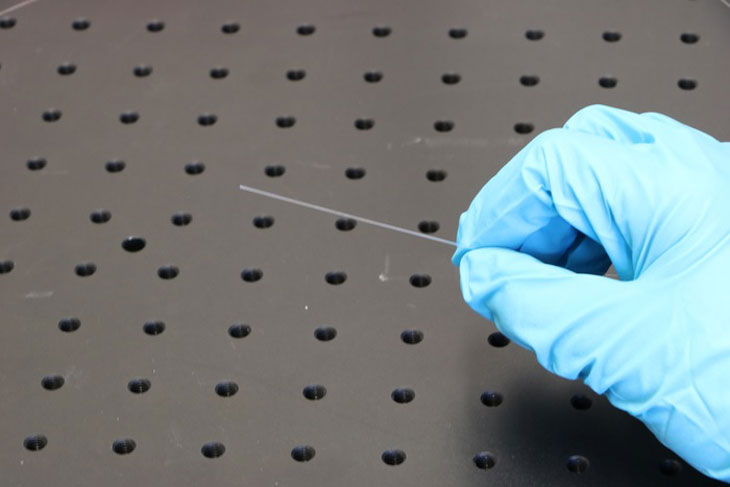Scientists at Oxford University have developed a new sensor made of extremely fine sapphire strands that can withstand extreme heat and radiation.
Extreme stability
Featured in the magazine Optics Expressthe device at the heart of this new research is a Bragg grating sensor (FBG), which can be used to monitor temperature and strain in optical communication systems. These elements are usually made of silica fiber optics, but such a design becomes problematic when temperatures approach 1000°C.
The FBG based on sapphire fibers promise greater stability at temperatures up to 1,900°C, which could allow them to be deployed in extreme environments (monitoring of gas turbines in jet engines in particular), while their resistance to radiation paves the way for their use in nuclear reactors and space.
However, these devices have certain limitations in their current form. Measuring less than half a millimeter wide, their fine fibers turn out to be significantly thicker than the wavelength of light, implying that the latter can bounce inside, creating parasitic wavelengths even jam the signal and render the sensor unusable.
To overcome this problem, the team ofOxford engraved a fine groove (one hundredth of a millimeter in diameter) along the entire length of the sapphire fiber using femtosecond lasers. Allowing light to be guided tightly, this approach allowed the sensor FBG in sapphire to transmit only one wavelength.

Many applications
” These sapphire optical fibers will find many applications in the extreme environments of a fusion power plant “, highlighted Rob Skiltonof the’British authority of atomic energy. ” They could increase tenfold the capabilities of future sensor and robotic maintenance systems in this sector, contributing to the delivery of safe, sustainable and low-carbon fusion energy.. »
The sapphire fiber sensor used in the experiments is only a centimeter long, but the researchers say developing versions several meters long is entirely possible. For aerospace, this would include measuring temperature throughout a jet engine and adjusting conditions on the fly to improve flight efficiency.
” This basic research could ultimately enable more efficient and accurate multi-point temperature measurement in harsh environments, improving control, efficiency and safety. “, considers for his part Mark Jefferiesof Rolls Royce. ” We look forward to working with Oxford University to explore its potential. »
[related_posts_by_tax taxonomies=”post_tag”]
The post New sapphire fiber sensor promises cleaner energy and air travel appeared first on Gamingsym.

